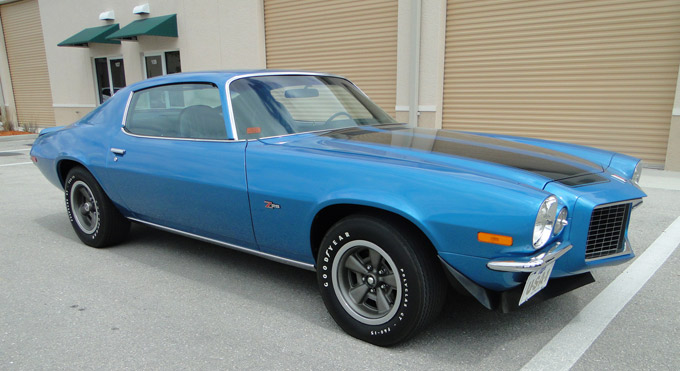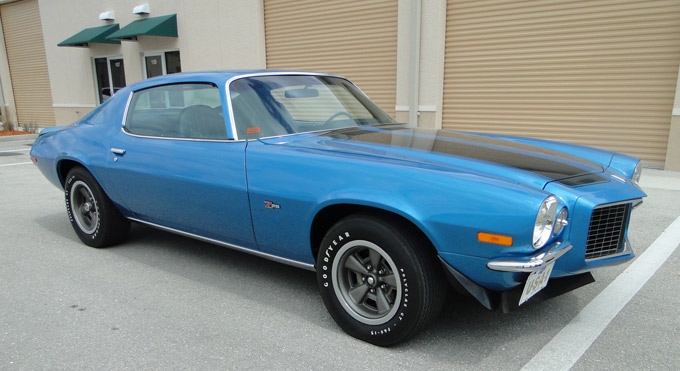
Beautiful rotisserie restoration on an original and very rare split-bumper Z/28. This is a matching-numbers example. Equipped with solid-lifter 350/330-hp LT1 V8 with heavy-duty close-ratio 4-speed transmission and Positraction rear end with 3.73 gears.
Options include power disc brakes, heavy-duty suspension and D80 spoiler package. Beautiful Mulsanne Blue Metallic finish surrounds a deluxe herringbone interior with woodgrain trim, full console and complete gauge package. Beautifully refurbished original mag wheels ride on Goodyear F60x15 Polyglas GT tires.
This split-bumper Z/28 is highly documented with the original bill of sale, dealer finance papers and factory Protect-O-Plate.
{auto}1604{/auto}

